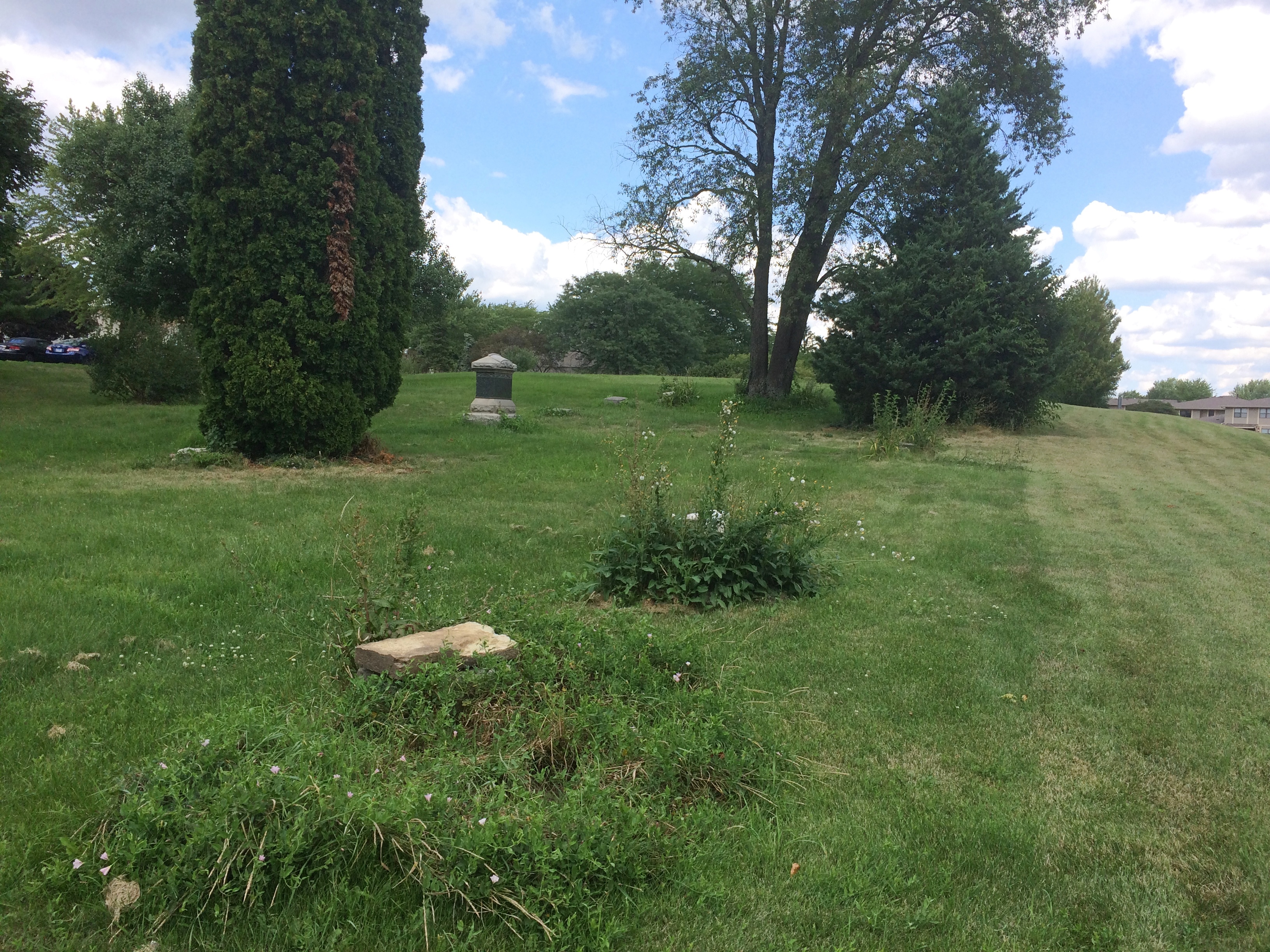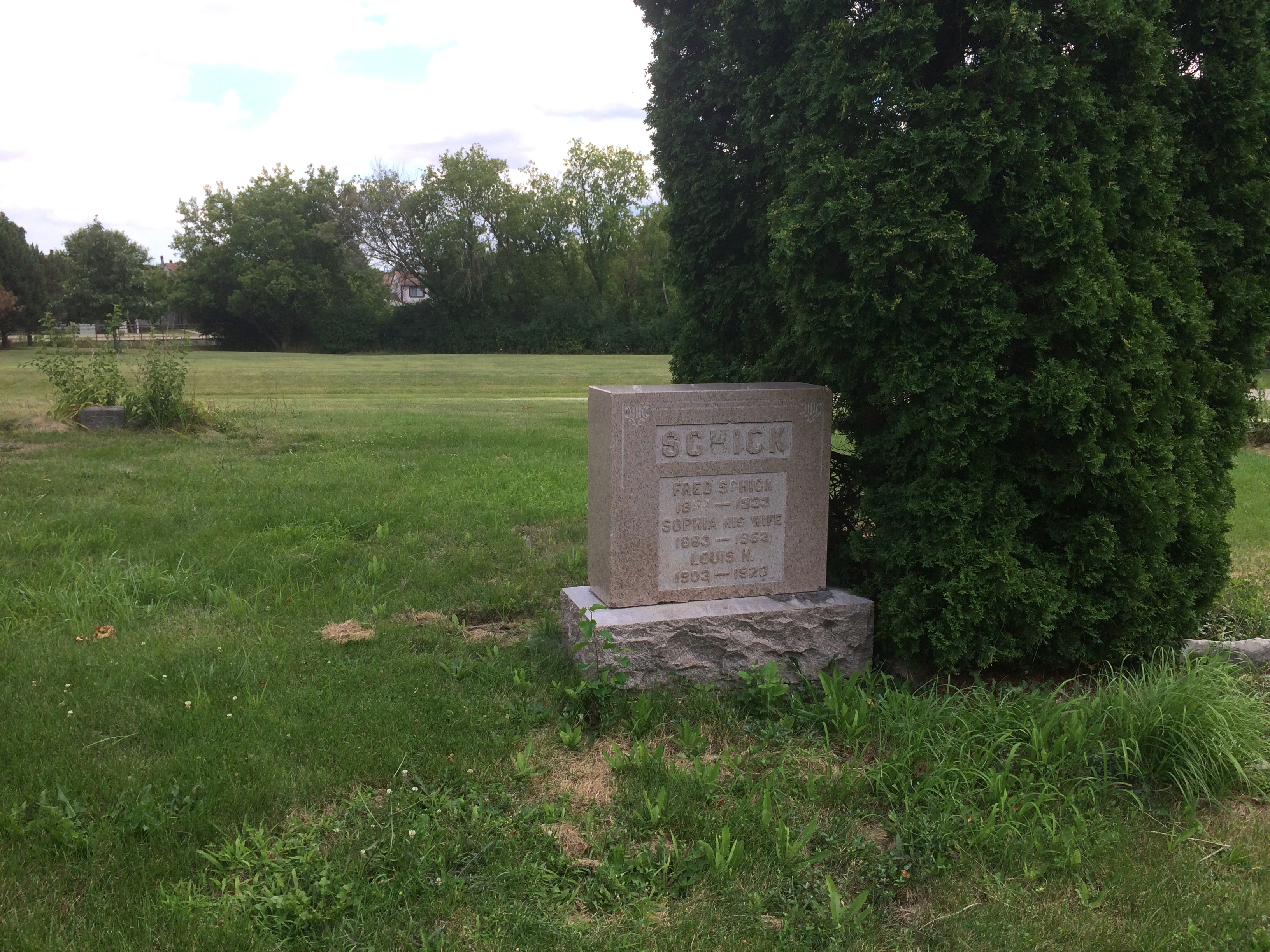Ontarioville, Illinois, is the geographic equivalent of a ghost sign on the side of a building. Its history is detailed by Neil Gale of the Digital Research Library of the Illinois History Journal. Enough to note here that it was a 19th-century town, but it didn’t prosper in the 20th century for various reasons, not enough to remain a distinct entity. Now Ontarioville is the name of a neighborhood in northwest suburban Hanover Park.
One bit of residuum from the town is the Old Ontarioville Cemetery, located on an unattended slice of land between the driveway to a water reclamation facility and the parking lot of the Grace Orthodox Presbyterian Church.
 It only has a scattering of stones, mostly obscured by grass in August and illegible anyway.
It only has a scattering of stones, mostly obscured by grass in August and illegible anyway.

 Some have almost completely worn away.
Some have almost completely worn away.
 But not the Schick stone.
But not the Schick stone.
 Or the Harmening stone.
Or the Harmening stone.
 Fred Schick (d. 1933) owned a general store in the community in the early 1900s and was postmaster besides, so it seems likely that Schick Road, a thoroughfare not far to the south, was named for him. He rests in the weedy cemetery with his wife Sophia, who lived to 1952, and his son, who died at 17 in 1920.
Fred Schick (d. 1933) owned a general store in the community in the early 1900s and was postmaster besides, so it seems likely that Schick Road, a thoroughfare not far to the south, was named for him. He rests in the weedy cemetery with his wife Sophia, who lived to 1952, and his son, who died at 17 in 1920.
Heinrich Harmening (d. 1903), here with wife Dorothea (d. 1924), seems like a somewhat bigger fish in this small pond, apparently owning a prosperous dairy farm and building a large house on what is now U.S. 20 (as pictured in Gale’s article). I must have driven by it many times without noticing, so one fine day I might go looking for it, if it’s still around.
Regarding the Harmening in the Ontarioville cemetery. The Harmening house is directly across the street from the Caputo’s on 20 – right down the road from the cemetery. It is now part of a sod farm. One of the Harmening daughters married a Schick. They are related. The Schick farm is on Schick Road in Bartlett, east of County Farm Road. A church bought the property – it is called Popular Creek Church. They use the old farmhouse for their parsonage. The area used to be called Schick’s Crossing – because Schick sold a piece of his land to the Illinois Central Railroad, which runs directly behind the house. He also was the postmaster there, and ran a general store.
Thanks for the information, Amy.